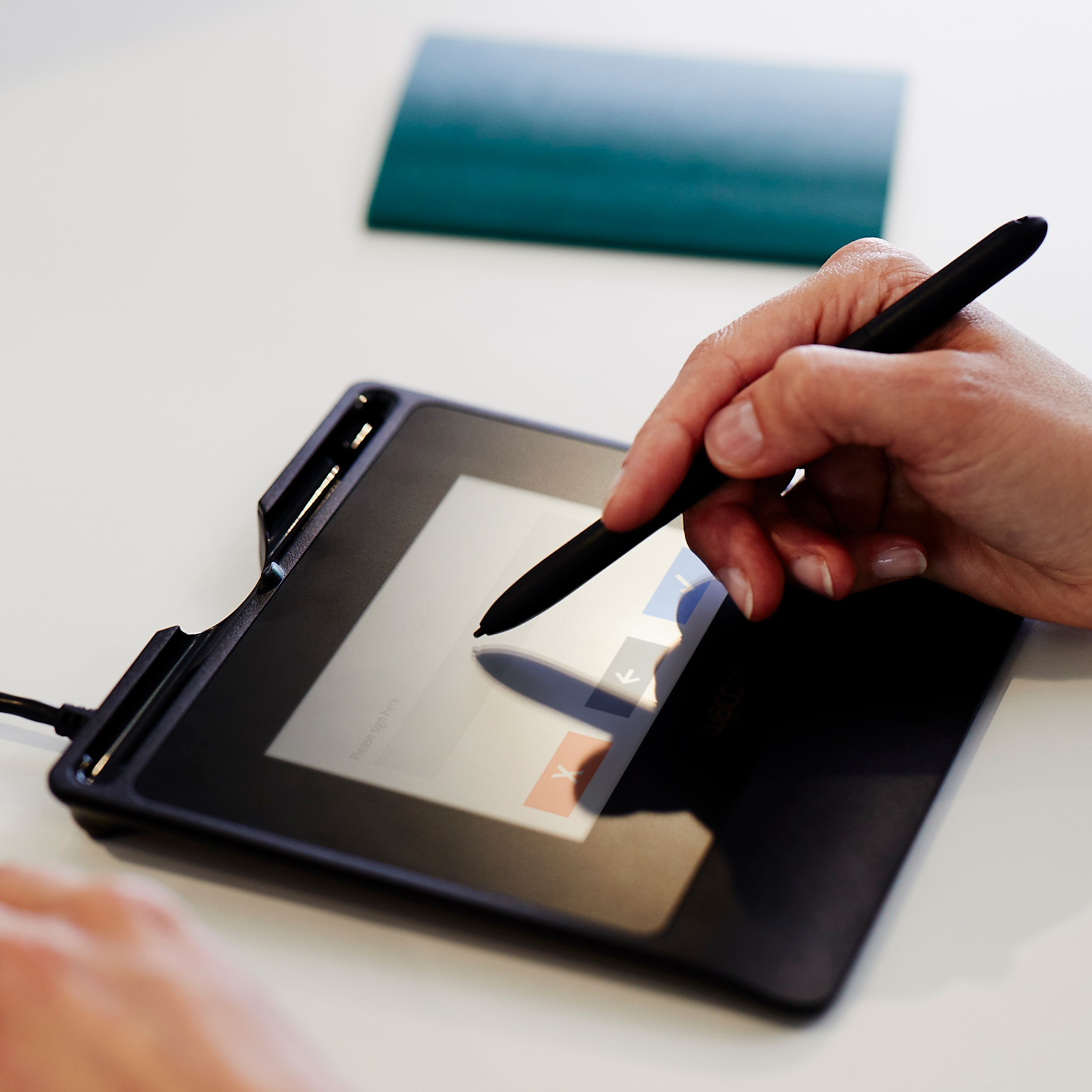As we dive deeper into the digital era, how we validate documents and authenticate identities has adapted drastically from what it used to be. Our trusty old friend, the traditional wet ink, is falling off and new forms are on the rise – digital and electronic ones. Having a clear picture of what sets these forms of signatures apart is fundamental in navigating the legal, business, and regulatory domains of the 21st century. In this blog post, we will look further into these terms, highlight their unique characteristics, and delve into their uses and legal implications.
What is a Wet Signature?

Wet signatures are the traditional way of signing documents by hand with a splash of ink. The term ‘wet’ points towards the drying time required for the ink on the paper. For centuries, these have served as the foundation for legal and official documents, providing tangible confirmation of an individual’s consent or agreement with the terms in a document. However, with the rapid shift towards digitalization, wet signing is proving to be inadequate in meeting the needs of fast-paced and remote transactions.
When should we sign with Wet ink?
There are some occasions when a wet signature is a must in order to make a document legally binding. F although some differences might occur based on different country regulations, in most cases wet ones are still required for documents that are wills, trusts, adoptions, divorce proceedings, court orders, evictions and insurance benefits.
Because electronic and digital signing require the signer’s consent to use specific technology, you should allow a wet signature when the document recipient insists on executing an agreement or contract on paper.
Guidelines about what makes Wet Ink enforceable?
While different countries have their own regulations for making wet ink enforceable, most utilize similar basic guidelines about what makes it enforceable in a court of law.
To be enforceable any agreement requires that:
- Both parties are agreeing to the same thing.
- The signer understands they are providing consent or agreement.
- The signer takes an action or signs their name confirming their agreement.
- The identity of the signer has been confirmed.
Understanding Electronic Signatures
An electronic signature is a broad term that encompasses any form of signing created electronically. Electronic signatures (e-signatures) include a variety of ways to sign documents electronically. This could include the process of signing through a typed name, a checkbox, or a digital representation of an agreement created using a stylus or mouse. They are relatively easy to implement and are commonly used for low-risk transactions where basic verification is sufficient. They serve the same purpose as wet ones but signal agreement or consent in a digital form.

Guidelines about what makes an Electronic Ink Signature enforceable?
In most counties, electronic signing has been determined to have the same force of law as a wet ink one. The requirements shown for wet ink signing above remain valid but many jurisdictions have identified additional requirements.
For an electronic signature to be valid it must:
- Clearly demonstrate consent – Customers must take an action to opt-in or agree. An opt-out is not sufficient.
- Display the terms they are agreeing to in a format the customer can read and understand.
- Ensure signers have copies of all documents and disclosures, including the agreement to do business electronically.
- Prevent document changes after signing
- Verify the signer’s identity.
While the specifics of the law regarding electronic signatures will vary by country, it is clear that they are a legally binding way to provide agreement and consent and to transact business both online and offline.
Understanding Digital Signatures

Digital signatures form a category of electronic signatures with enhanced security. A digital one serves as a cryptographic method employed to ascertain the genuineness and completeness of digital messages, documents, or transactions. It establishes a mechanism to confirm the sender’s identity and validate that the message remains unchanged during transmission. Digital signing find extensive application in electronic transactions, online contractual agreements, software dispersal, and similar scenarios where authentication and non-repudiation play pivotal roles. They offer a dependable and secure means to verify the identities of stakeholders engaged in digital correspondence and uphold the integrity of transmitted data. Here, we also need to discuss electronic handwritten signatures, which is a representation of a digital signature category with enhanced security. Creating a robust electronic handwritten signature involves utilizing quality technology, protecting biometric data, ensuring authenticity, and incorporating time-stamping mechanisms
Wacom has also developed the Wacom Ink SDK for signature which enables biometrically-accurate electronic handwritten signatures. The SDK automatically renders digital ink, displays dialog boxes and captures full biometric data that can be leveraged for a range of exciting new use cases across financial services, legal processes, sales transactions and many other identity verification scenarios.
Regarding the importance of full biometric data, it refers to capturing not just how it looks like but also additional biometric parameters such as pressure, speed, acceleration, direction and in-air movement. For instance, the movement in the air reveals the unseen trajectory and intersections of the biometric data, which adds an extra layer of security and differentiates the Wacom Ink SDKs from competitors. Overall, full biometric data provides a more comprehensive and secure method of verification compared to simple image-based signatures and it is important for enhanced security, greater authentication accuracy and legal compliance.
The Signature Library includes the tools necessary to enable applications to capture biometric handwritten signatures with Wacom STU series, or pen displays, pen tablets and mobile devices – operating with Windows, Android, iOS (through JavaScript) or on a web browser. The library requires minimal effort to integrate, and automatically renders digital ink, displays dialog boxes, and captures full biometric data. Wacom electronic handwritten signatures offer several advantages, particularly in terms of accuracy, security, and flexibility.
Unravelling the Mix
When distinguishing between wet, electronic and digital signing, the execution and security level become key differentiators. Wet ones occur physically on paper, whereas digital ones leverage cryptographic techniques to secure documents and validate signers. Electronic signing, a wider category, encapsulate digital signatures and other simple electronic sign-offs, such as clicking an ‘I agree’ button or typing a name onto a document.
Legalities and Acceptance
Digital and electronic signatures have been increasingly accepted globally, aligning with traditional wet ones. Legal frameworks like the US ESIGN Act and the EU’s eIDAS regulation have validated their application across a range of transactions. However, it’s worth noting that certain specific situations may dictate a biased choice of signing, particularly in the realms of legal, financial, and governmental business.
In terms of legally binding electronic handwritten signatures, Wacom has been a pioneer in the field, offering solutions that adhere to industry-specific regulations and requirements. With the Wacom Ink SDK for verification and handwritten electronic legally binding solutions, businesses can ensure that electronic ones are verified, providing extra layer of security when conducting transactions. The SDK contains a verification engine that enables two types of integration: dynamic (real-time) and static (image-based). It is a solution that enables both these types of verification within a single product. They can be used either independently or in combination.
Adapting Electronic and Digital across Industries with Wacom

The use of digital and electronic signatures varies by industry and is driven by the need for efficiency, security, and the ability to operate remotely. Sectors such as finance, law, healthcare, and real estate are progressively integrating this type of signing into their operations, desiring to streamline processes, reduce paper usage, strengthen security, and meet the needs of a digitally competent clientele. Thanks to Wacom’s services and products, the integration of electronic and digital signatures is effortless, regardless of the industry. Wacom’s solutions adhere to a wide range of regulations and requirements, making them a reliable choice for any business looking to adapt to the changing landscape of signatures.
Incorporating digital and electronic handwritten signatures into your business operations is extremely easy, thanks to Wacom’s services and products. Wacom offers customizable solutions that blend effortlessly into your existing workflows, ensuring a smooth transition to paperless signing. Additionally, Wacom also offers Signatures Pad and Pen displays to combine bets with the software solutions.
Security and Authentication: A major Advantage of Digital Signatures

This is where digital signatures truly outshine wet signatures, offering superior protection. The traditional wet ink, while reliable, pose authentication challenges and are more prone to falsification than digital ones. Electronic signing provide more security features, but their implementation and reliability can vary greatly. With the rise of cyber threats and the need for secure document processes, digital signatures have become a vital tool in maintaining security and preventing fraud.
Environmental Impact and Efficiency: A Greener alternative
The shift from wet to digital and electronic signatures marks a significant step towards sustainable and efficient practices. By reducing dependency on paper, ink, and physical storage, digital signing contributes to environmental preservation while offering substantial savings in time and resources for businesses.
Navigating the Digital Wave: Smooth Transition from Wet to Electronic or Digital one
On the one hand, electronic signatures refer to any electronic process that indicates acceptance or approval of a document or contract. This can include a typed name, a click of an “I Accept” button, or other forms of electronic acknowledgment. On the other hand, digital signatures are a specific type of electronic signature that are based on extra level of security, considering cryptography and biometric data. Overall, while both facilitate the electronic signing of documents, digital signatures offer a higher level of security and assurance.
For businesses and individuals transitioning from wet to digital or electronic signatures, understanding these signatures’ legal, technical, and procedural aspects is crucial. Choosing the right form of signature will be dictated by specific needs, legal necessities, and security considerations for each transaction. It would be beneficial to look for platforms like Wacom that deliver flexibility, compliance, and user-friendly interfaces to simplify this transition.
In Conclusion
The world of signatures is changing by reflecting broader digital trends. The differences between wet and digital signify a shift towards more secure, efficient, and eco-friendly practices. As electronic ones become more prevalent, understanding their intricacies, legal divisions, and best practices is vital in manoeuvring the digital realm. With Wacom’s solutions, businesses and individuals can embrace the benefits of electronic and digital ones with ease.
In need for more information or interested in hardware devices or software solutions, please feel free to contact us. You can also subscribe for Wacom newsletter here, read our articles here or follow us on Twitter and LinkedIn.







